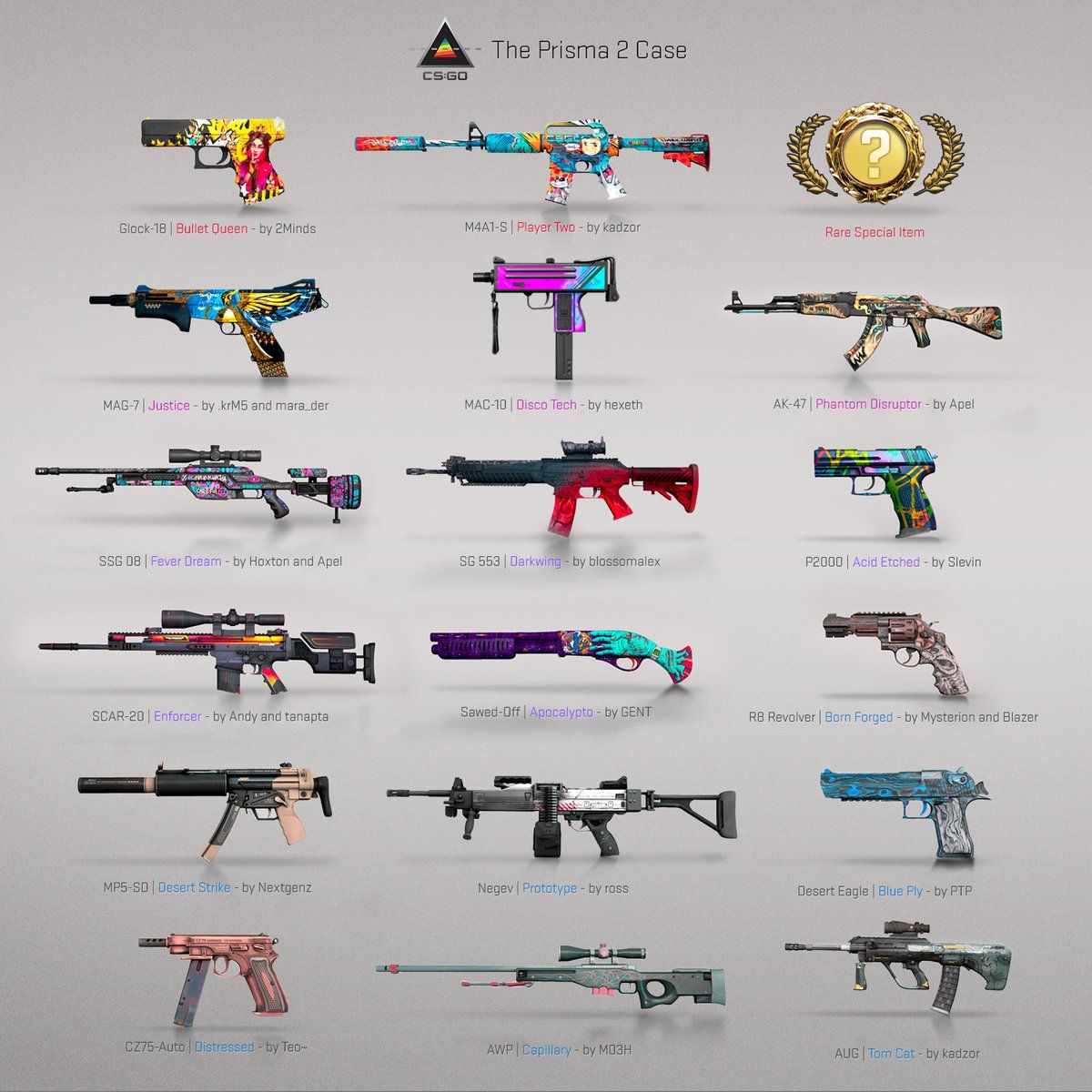Antalya Escapes
Discover the best of Antalya with exclusive insights and tips.
Skinsational: How CSGO Skins Became the New Currency of Digital Fashion
Discover how CSGO skins have transformed into a thrilling digital currency, shaping the future of virtual fashion and player identities!
The Evolution of CSGO Skins: From Gameplay Enhancements to Digital Fashion Statements
The journey of CSGO skins began as a simple mechanic designed to enhance gameplay. Introduced in the Arms Deal update of 2013, these virtual items initially served a practical purpose, allowing players to customize their weapons and stand out in the competitive environment. Players quickly embraced this new feature, leading to an explosion of interest in reselling and trading. The skin economy took shape, with certain skins becoming sought-after collectibles, leading to the emergence of community markets and third-party trading sites. This shift laid the foundation for what would evolve into a vibrant subculture within the gaming community.
As time progressed, CSGO skins transformed from mere gameplay enhancements into a form of digital fashion statements. Today, they are viewed not only as gameplay modifiers but also as expressions of personal style and status among gamers. Many players curate their collections, showcasing rare and visually stunning skins, much like fashion enthusiasts with their wardrobes. This evolution has led to the global phenomenon of skin betting and the influence of content creators and influencers who highlight their collections, drawing attention to the artistry behind each design. The CSGO skin ecosystem continues to grow, bridging the gap between gaming and digital fashion trends.

Counter-Strike is a popular tactical first-person shooter game that has captivated millions of players worldwide. Its competitive nature and emphasis on teamwork have made it a staple in the gaming community. Players often encounter various technical issues, one of which is when a match demo has expired cs2, affecting their ability to review gameplay.
How CSGO Skins Are Changing the Landscape of Virtual Currency: An In-Depth Look
The rise of CSGO skins has transformed the way players engage with virtual currencies, significantly impacting the gaming economy. These in-game items, which allow players to customize their characters and weapons, have evolved from simple cosmetic enhancements to valuable assets in the digital marketplace. As a result, players are increasingly willing to invest real money to acquire rare skins, driving demand and creating an entire sub-industry around buying, selling, and trading these items. This trend has led to skins being treated as virtual currencies in their own right, as they can be auctioned and valued based on rarity and demand.
The impact of these CSGO skins extends beyond individual player interests, affecting the broader landscape of gaming and virtual economies. For instance, players often engage in skin betting and gambling, adding another layer of complexity to their usage. Moreover, companies and developers are noticing this trend, leading to innovations in the way virtual currencies are integrated into gaming experiences. This integration not only reflects the growing importance of virtual currencies in our digital world but also raises questions about regulation and the future of gaming economies as they blur the lines between entertainment and finance.
What Makes CSGO Skins So Valuable? Exploring Rarity, Demand, and Market Trends
The value of CSGO skins is largely determined by their rarity, which refers to how rare or uncommon a skin is within the game's ecosystem. Some skins are produced in limited quantities, making them highly sought after by collectors and players alike. Factors such as the condition of the skin (measured by the float value), its specific design, and its historical significance can also contribute to its rarity. For example, a skin that was released during a particular event or tournament may hold additional value due to its association with that occasion. Understanding the nuances of rarity helps players appreciate why certain skins command such high prices on the market.
The demand for CSGO skins is driven by various market trends, including popular streamers showcasing rare items and the overall community interest in customizing gameplay. As more players join the game, the demand for unique and visually appealing skins grows, amplifying their market value. Additionally, certain skins may experience value spikes due to their status as collector’s items, often influenced by the performance of professional esports players or in-game events. Tracking these market trends can provide insight into future value appreciation or depreciation, making it essential for both collectors and players who wish to manage their in-game investments effectively.